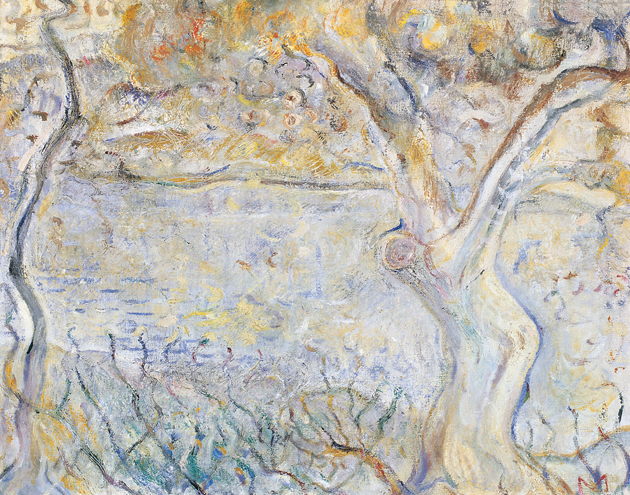
I was a bit anxious when I arrived at the monastery, having presumptions of a great experience at the exhibition. While I reach the Novitiate Hall among the ancient walls, passing the yard, the fountain, the cloister, I am overwhelmed by the past, the spirit of history. Bygone times whisper from every nook, and I feel as if the hermit monks had made this a condition to have the experience: I must leave the outside world, earthly being, behind.
I enter the Novitiate Hall (for me, it is not an exhibition hall – it would be unworthy of the place to call it so) as a foreign onlooker, but upon seeing the beams, the carved ornaments and symbols, the pictures on the walls, it all looks familiar!
I get under its influence, I am under its influence!
I stand before Menyhért Tóth’s pictures, musing, unaware of the passing moments... I should remember my life, I do not need to accept this, but here even the insensitive starts feeling, the faithless suddenly starts believing. I begin to envy the monks who once lived here: theirs was a life permeated with intellect, the profundity of ideas, as are these works of art. Looking at them, I see into the world and lives of the “invisible travellers.” In the Novitiate Hall, before the works, I am ready to believe that art is divine creation, the reflection of human and divine ideas and messages, the way to sense depthless being, help to experience the ways of “dimensions.” Nothing is spelled out, this art only presents and invites us to confront, yet anxiousness and order rule the pictures, reinterpreting the sense of mortality. It intensifies my desire for peace and harmony, because we live buried in the world we create. With He who walks on water, I could sense the radiation of that higher world, spirituality, which defines our lives and fates.
For a work of art to be able to represent the experiences and emotions of the human spirit, it does not need to comply with any written or unwritten rules. Whether their tools were simple, even naive, or pointed towards abstraction, the two works led me to the spiritual, magical ideas of being.